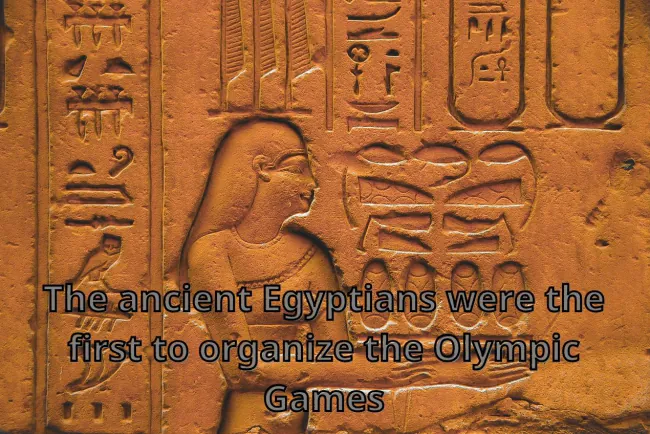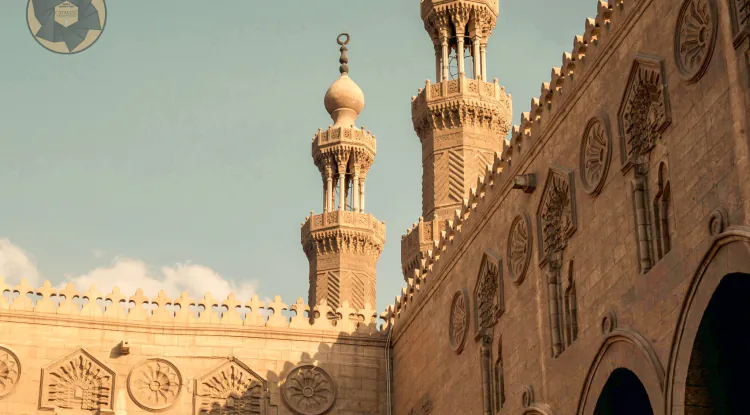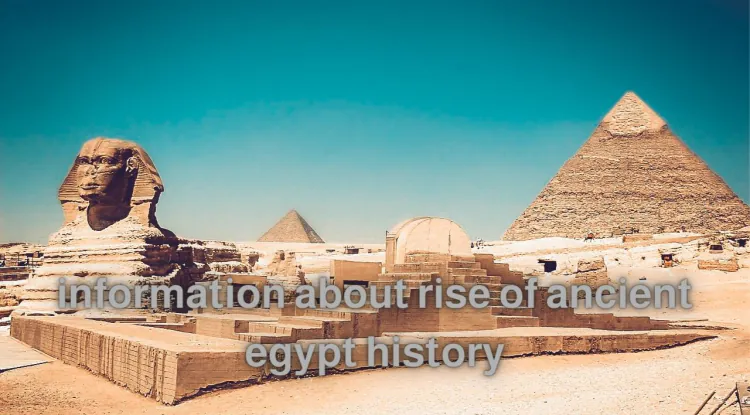Serapeum Temple (Alexandria Acropolis) at Alexandria Egypt
The "Temple of the Serapeum" is considered the most famous tourist attraction in the city of Alexandria, and is located specifically between the area of the pillar cemeteries and the Kom el-Shoqafa plateau. Its history begins more than 2,300 years ago, specifically during the reign of "Ptolemy I", the founder of the Ptolemaic state in Egypt.

The "Temple of the Serapeum" is considered the most famous tourist attraction in the city of Alexandria, and is located specifically between the area of the pillar cemeteries and the Kom el-Shoqafa plateau. Its history begins more than 2,300 years ago, specifically during the reign of "Ptolemy I", the founder of the Ptolemaic state in Egypt, who assumed power after the death of Alexander the Great. In the year 323 BC, he wanted to unite the Egyptians and Greeks to worship one god, so he formed a committee of Egyptian and Greek religious scholars who agreed that this religion would be the Holy Trinity, which included the god Serapis, the goddess Isis, and her son, the god Harpocrates.
what is the Serapeum Temple?
The Serapeum Temple is located in the Fifth District of Alexandria, which is the National District or Raqouda District. This place was the highest place in the city and was called the Acropolis of Alexandria. This area, before the arrival of Alexander and before the founding of the city, was part of 16 Egyptian villages, and part of the village of Raqouda, which was the nucleus. On which the city of Alexandria was founded by Alexander the Great in 331 BC.
After the founding of the city of Alexandria, this area was known as the Acropolis of the City, or the high place on which the most important temples and religious buildings were based, in the style of the Greek city, in which the Acropolis represented the most important vital part because of the religious buildings it contained for the gods of the city, and one of the most important buildings above the Acropolis of Alexandria was the Temple. The Serapeum, or the Temple of the God Serapis, is the area located today above Bab Sidra Hill between the current Muslim burial area, known as “The Column,” and the archaeological plateau of Kom el-Shuqafa.
Above this fortified hill, a temple to the god Mithra was built alongside the great Serapeum, known as “Mithraeum.” A royal shrine from the Ptolemaic era was also found on the hill, which may have been used as a temple. This is in addition to other monuments that were on the hill, such as the Sughra Library and Warraq, or the House of Wisdom, which was It served as a university in the Roman era.
Emperor Claudius founded on the Acropolis Hill a history school known as “The Claudium.” What remained of it became called “The Arcadium” in the era of Emperor Arcadius, and it was the center of the Alexandrian School. Since the reign of Emperor Justinian (527-565 AD), the Arcadium took the name Angelium and a monastery was attached to it. A church was built for Saint John the Baptist, then it was demolished in the year 600 AD. It was rebuilt by Patriarch Isaac (681-684 AD), and it continued until it was completely destroyed in about the tenth century.
The establishing the temple:
After the death of Alexander the Great, his leaders divided up the vast empire that he had left, and Egypt was the share of Ptolemy Ibn Lagos, who worked to ensure the participation of both the Egyptians and the Greeks in all areas that contributed to the advancement of the facilities of the new state. Since religion represented the main focus of the lives of both the Egyptians and the Greeks, it was necessary Ptolemy must start from this angle so that he can reconcile the requirements of the Egyptian element and the Greek element.
Ptolemy Ibn Lagos thought about bringing together the Greek beliefs coming with him to the East, and his idea guided him to create a new religion that would meet the needs of both parties. Therefore, it was necessary to seek help from the clergy, so he formed a higher committee for this matter, in which the Egyptian and Greek sides were represented. He headed the Egyptian committee. The priest Manetho and the head of the Greek committee, Timothy, and after many discussions, consultations, and mixing of ideas, the two committees decided that the focus of the new religion should be the holy trinity consisting of the god Serapis, the goddess Isis, and their son, the god Harpocrates.
It is worth noting that the goddess Isis and her son Harpocrates are authentic Egyptian gods, and their worship spread in many Egyptian regions in Egypt and abroad. They are both Egyptian gods and nothing new was introduced to them when they were chosen to be two sides of the new Alexandrian trinity. As for Serapis, he was the same Egyptian god Osiris-Hapi. The name Serapis was derived from the Apis calf, which unites with Osiris, forming the name Osiris Hapi or Serapis, meaning the Apis calf, after his death. The clergy set their sights on presenting Serapis to the Greeks and Egyptians in an image that suits their views and beliefs, so they settled on portraying the new god in a beautiful, bearded form, with his features. She resembles the god Zeus, the greatest Greek god, and Ptolemy I created a temple for this new religion that was considered at that time one of the greatest temples in the Mediterranean basin.
The temple had a rectangular shape, which was taken from the shape of ancient Greek houses, where the entrance was located to the east, and the length of its side from east to west was 77 meters. The Holy of Holies contained a huge statue of the god Serapis in Greek form, and we have many copies of this statue in the Greco-Roman Museum. .
Ancient sources in the Ptolemaic and Roman era tell us that this temple was designed by a Greek engineer called Parmenescus. The building contained several lofty entrances and also contained large columns surrounding its four sides. Inside the Holy of Holies was placed a statue of the new god Serapis. This statue was meticulously made and studded with precious stones. It was The building as a whole was in the Greek style, and in addition to its religious importance, it included a large library, which was called the Little Library due to the presence of the Great Library of Alexandria, so that it was possible to differentiate between them.
Although only ruins remain of the temple, we know a lot about its description through the writings of ancient historians, which enabled Alan Rowe to identify the upper part of the hill on which the pillars are located, while the second part is located at the bottom of the hill where the long corridors are. The corridor is connected to two roads, one of which is designated for vehicles and the other for pedestrians. The temple is located in the middle of the hill and has entrances made of four columns and a large staircase made of alabaster, built in the Roman style, as described by Avtonius. Then there is a roofed hall, the ceiling of its middle part higher than the rest of the ceiling of the hall, which takes the form of a dome supported on a row. A double colonnade of marble columns, then a square courtyard in the middle of which is a courtyard surrounded by columns and whose walls are decorated with scenes from Greek mythology. The temple is surrounded by double porticoes based on columns, whose capitals are made of gilded bronze and whose ceiling is decorated with golden decorations.
History of the temple:
Through the inscriptions found on the foundation deposits in the temple, which were revealed by the scientist Alan Rowe, we can know that the construction of the temple dates back to the era of Ptolemy III Euergetes I (246-221 BC), and the library attached to it dates back to the Ptolemaic era in the third century BC. As for the rest of the temple, it was completed in the Roman era. The temple was destroyed during the revolution carried out by the Jews of Alexandria during the reign of Emperor Trajan (98-117 AD). On the ruins of the Ptolemaic temple, Emperor Hadrian (117-138 AD) erected another temple, which was demolished again during the campaign. Which Christians established in Alexandria after the official recognition of Christianity in the year 391 AD during the reign of Theodosius I, which resulted in the elimination of all pagan temples, including the Temple of the Serapeum. Later, a church bearing the name of Saint John was erected on the ruins of this temple. This church continued to perform its function until the tenth century AD.
What's Your Reaction?






















